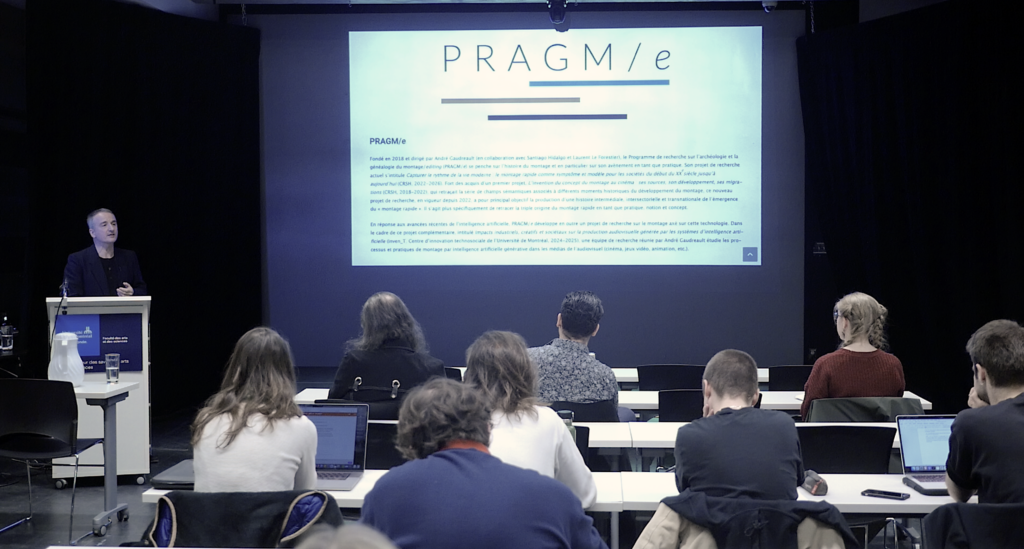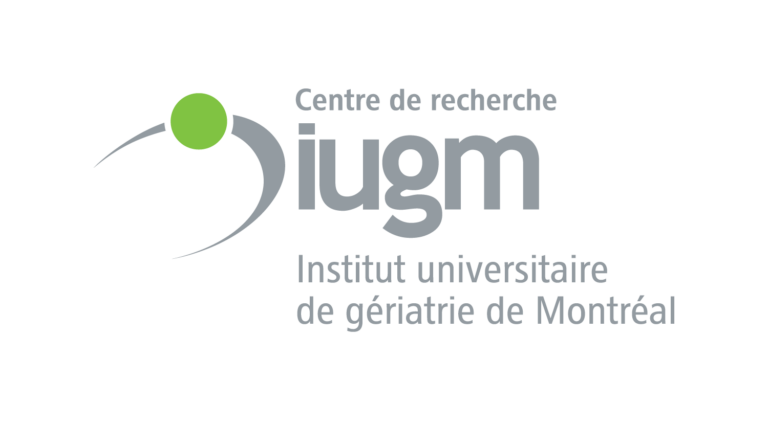The cinEXmedia co-researcher analyzed the evolution of audiovisual motion-capture technologies—from the early days of cinema to the age of artificial intelligence—during a lecture at the Université de Montréal

Olivier Du Ruisseau
A professor at the Université Sorbonne Nouvelle, Laurent Guido was invited to speak at the Grandes conférences series hosted by the Canada Research Chair in Film and Media Studies, at the Université de Montréal, on April 1st. His talk, titled “Fantasmagories automatiques : entre scènes et écrans, capter le rythme entraînant du corps-spectacle” ("Automatic Phantasmagorias: Between Stage and Screen, Capturing the Enchanting Rhythm of the Spectacle-Body," in French only), focused on the evolution of audiovisual systems designed to capture live performances and bodily movement, from the origins of cinema to the first applications of artificial intelligence.
A film historian and specialist in the relationship between cinema, corporeality, and music—as well as in theories of the spectacular in media—Laurent Guido is the author of several works, including L’Âge du rythme (2007), De Wagner au cinéma (2019), and Cinéma, mythe et idéologie (2020). It was partly due to his interest in rhythm and the cinema of attractions that he became a founding member of cinEXmedia.
The researcher opened his lecture by referencing some of the most recent technologies, such as automated camera-tracking systems used in sports broadcasts and automated multicam editing processes for performance recordings. His aim was to question the motivations behind the development of these systems and to explore the social and aesthetic issues they raise, by comparing them with the emergence of chronophotography and the cinematograph.
“Theatre Informatics”
Throughout his presentation, the professor drew connections between the technical advancements of these two historical periods and the reactions they provoked among artists and theorists. The writings of Italian intellectual Ricciotto Canudo (1877–1923), a pioneer of modern film theory, served as a guiding thread in his analysis.
In The Birth of a Sixth Art (1911), Canudo described cinema as “the great reconciliation not only between science and art, but between the rhythms of time and the rhythms of space.” According to Guido, this formula “contains the essence of all the key questions that still concern us today.”

Canudo’s ideas now resonate with the recent work of French researcher Rémi Ronfard on “theatrical computing”—an emerging field that explores how technology can support the design, production, and dissemination of stage performances. According to Guido, the emergence of cinema at the turn of the 20th century and these new digital tools follow a similar logic: they arise in response to an era’s specific concerns, offering “systems capable of revealing the shape of movement.”
For instance, in the 1910s, animated images were used in medical settings to better understand human movement. Today, artificial intelligence is being used to reduce the production costs of performances or to make them appear “more dynamic,” the researcher notes.
Between Technological Promises and Uncertainty
While the first half of Guido’s lecture highlighted the parallels between these two historical moments, the second part explored the concerns that motion-capture and performance-recording technologies have sparked—both past and present.
“The constant tension between the real body and the virtual body is one of the recurring themes in debates about the technical mediation of stage performances, from Edison’s time to our own,” the researcher explained. “The technical simulation of rhythmically skilled bodies has continuously fueled debates around the merits and risks of broadcasting theatrical performance in dematerialized form.”
In today’s digital age, we can attend concerts remotely—or even in co-presence—where performances unite artists and audiences in real time, across different locations around the globe. While these technologies open new creative possibilities, they also raise serious concerns, especially environmental ones, since the servers powering artificial intelligence systems are particularly energy-intensive.
Nonetheless, Laurent Guido concluded his lecture on an optimistic note, emphasizing the “revolutionary potential” of these tools—provided they are placed in the service of the same “human creative genius,” a phrase he once again borrowed from Canudo—thanks to which cinema was able to become a fully-fledged art form.

